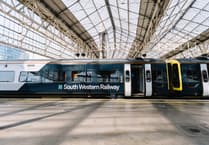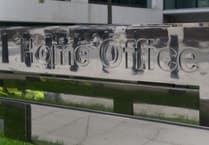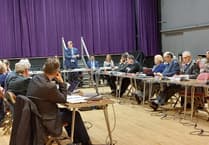A group of 18 Four Marks Putting Club members arranged a guided tour of the historic wind tunnels on the former Royal Aircraft Establishment site in Farnborough.
Farnborough Air Sciences Trust (FAST) was the organiser of the outing to the two tunnels where visits are possible. The tour started in the original building R52 which contains the low turbulence 4ft by 3ft wind tunnel built in 1946.
The group was given an introductory talk by Brian, one of the FAST volunteers, about the tunnels and their history.
It was here in 1905 that flying in the UK began when the Army’s balloon factory in Aldershot was moved to Farnborough.
Flying moved on from balloons and kites to the first powered aircraft which was built by Samuel Cody in 1908.
During the First World War as the work on aircraft construction developed, the organisation was renamed the RAE. After the war bulk production of aircraft was wound down and the RAE concentrated on aviation design and development.
To understand the science of aerodynamics, wind tunnels were built. These are basically ducts through which air is drawn, enabling the flow patterns around objects to be investigated.
This could be by direct observation or by measuring the pressure on the surfaces of the object.
From 1916 until after the Second World War wind tunnels were constructed on the RAE site, initially in the disused factory buildings. The complex expanded as new experimental structures with larger tunnels replaced many of the earlier ones.
Over time there were up to 16 wind tunnels on the site and the largest 24ft tunnel was in use until the 1990s.
In 1991 the RAE ceased to exist and the MoD set out to demolish and sell the site. Fortunately the main wind tunnels were listed in 2003 and restored externally by the developer of the Farnborough Business Park.
In the course of the early experiments, it was discovered that using an electric fan to pull the air through the duct rather than driving it through produced a more streamlined flow.
Much energy could be saved by recirculating the air through a closed-return duct with curved vanes at the corners to reduce turbulence.
The group was shown the type of objects that were used for testing. These ranged from small models of whole aircraft or fuselages to aerofoil sections of wings.
The methods of mounting the objects to be tested were explained. These were carefully designed to cause as little disturbance to the airflow as possible.
The tour continued as the group was led into the 80m by 30m central bay of building R52 into which the 4ft by 3ft tunnel just fitted. It was an impressive sight, constructed in varnished timber on a steel frame and powered by a historic 400 horsepower motor. The system used for measuring the pressure variations over the surfaces of the test specimens was demonstrated.
The group was then taken to building Q121, some 70m long, 40m wide and 15m high. The building houses the 24ft wind tunnel – or, more correctly, the whole building is the tunnel.
It was the largest tunnel in Great Britain and the largest closed-return type tunnel in Europe. It was built between 1934 and 1935 for testing aero engines and aircraft.
The main features of the tunnel are the enormous interior spaces enclosed by the concrete and corrugated steel walls and the massive 24ft fan. Equally impressive is the return air duct with its 12m high pre-cast concrete deflecting vanes through which you walk as you move round the duct.
There is a machinery room with a 2,000 horsepower motor for driving the fan and an upper gantry from which models of smaller aircraft could be suspended. Aircraft, engines and propellers could all be placed in the test area, either suspended or positioned on the base of the test platform.
Unlike some of the other wind tunnels on the site and around the world, this building remains very much in its original form.
The tour was rounded off back in hut R52 with a short presentation of video clips and historic photographs of the tunnels in use.
It was a thoroughly enjoyable visit and members expressed much appreciation to Fin Gordon, Bob Gentry and fellow volunteers from FAST for giving such an interesting and informative tour.
John Pickering




